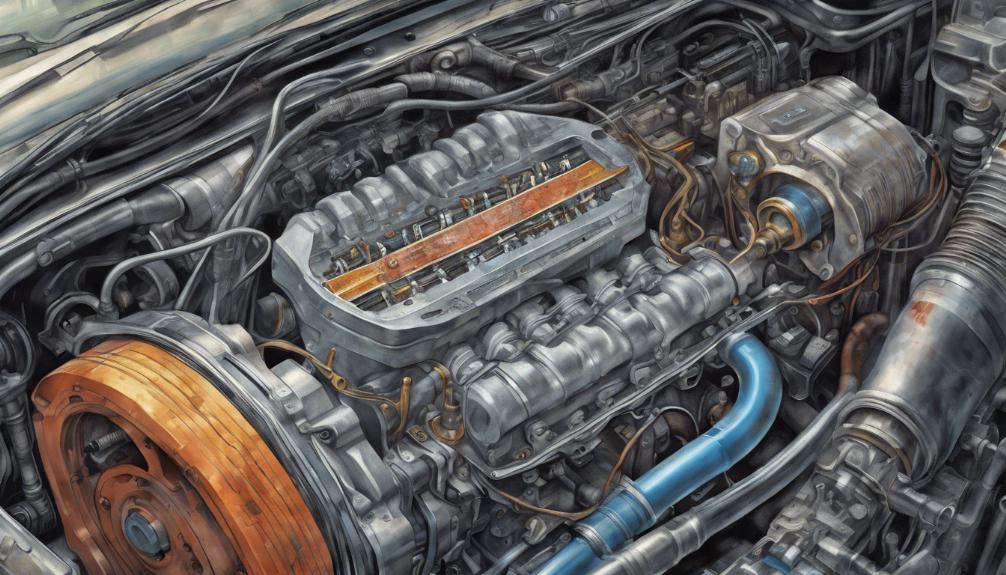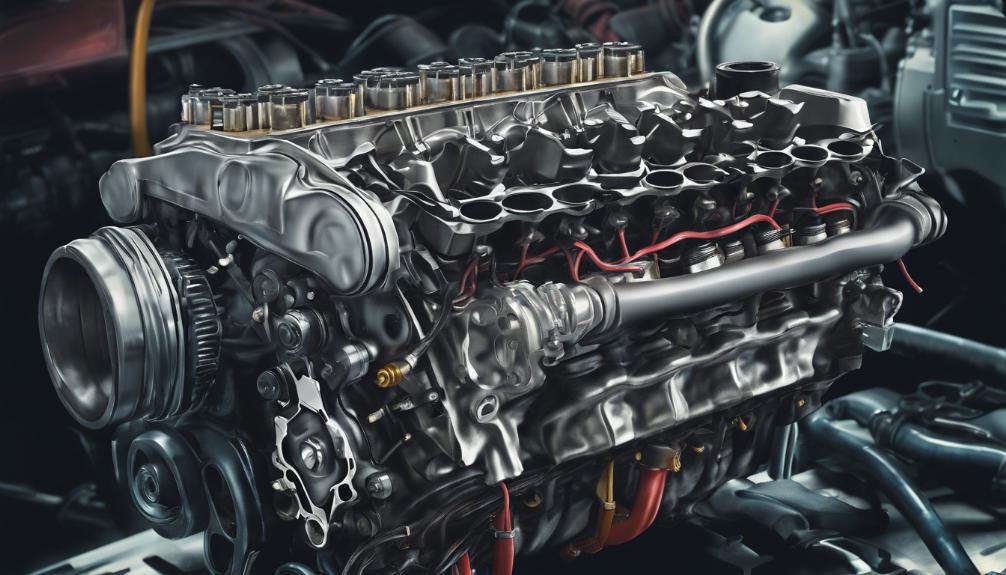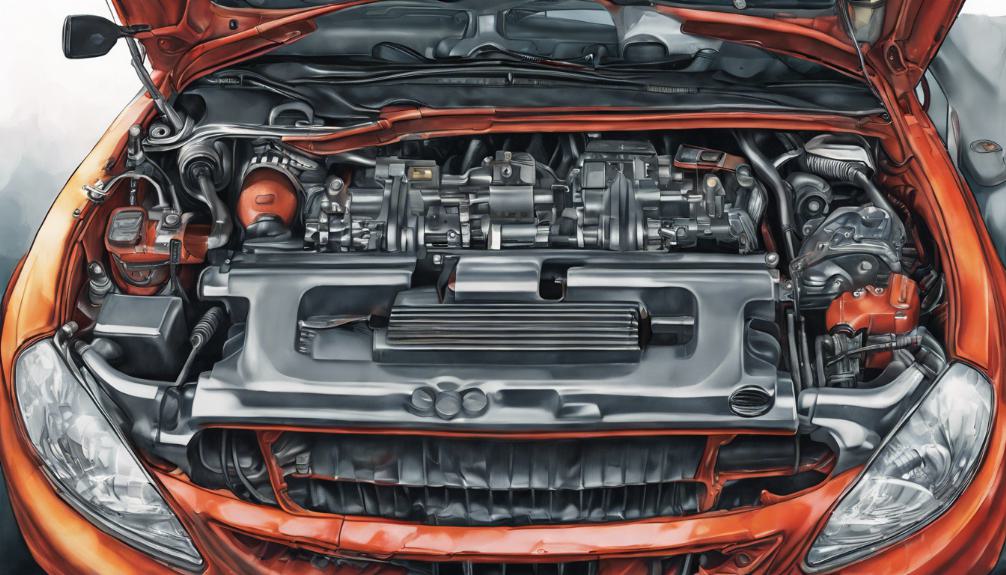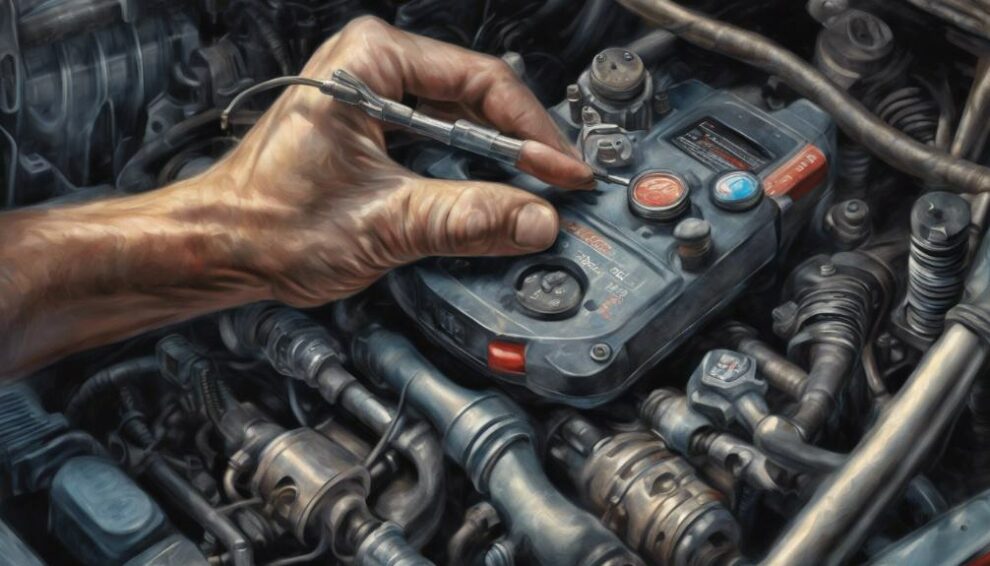If you’re dealing with a P0366 Code for the Camshaft Position Sensor B Circuit on Bank 1, key steps await. The Camshaft Position Sensor relays important data to the PCM, impacting engine timing.
Signal inconsistencies lead to this code, signaling sensor troubles. Testing the sensor with tools like multimeters helps uncover issues. Watch voltage levels and waveform patterns closely to meet specs.
Engine performance may suffer with a faulty sensor, causing idling issues or stalling. Begin with these steps to diagnose potential sensor problems and optimize your vehicle’s performance.
What You Need to Know
- The P0366 code relates to Camshaft Position Sensor B Circuit performance issues on Bank 1.
- Symptoms include rough idle, delayed starting, poor acceleration, and decreased engine performance.
- Common causes are faulty cam sensor B, wiring issues, reluctor wheel damage, or extended cranking periods.
- Solutions involve checking wiring, inspecting sensor and reluctor wheel, and considering sensor replacement.
- Professional service includes comprehensive diagnostics, voltage readings analysis, and sensor performance optimization.
Technical Description of P0366 Code

Discussing the technical description of the P0366 code involves understanding how the Camshaft Position Sensor B Circuit operates in engine bank 1.
The Camshaft Position Sensor (CPS) plays a vital role in signaling the Powertrain Control Module (PCM) regarding Top Dead Center and cam sensor position.
When there are discrepancies in these signals, the P0366 code is triggered, indicating a potential issue with the sensor.
To diagnose this, various sensor testing methods can be employed to check the functionality of the Camshaft Position Sensor B Circuit.
These methods can include using multimeters or oscilloscopes to measure voltage and waveform patterns, ensuring that the sensor is operating within the manufacturer’s specified parameters.
It’s important to note that a faulty Camshaft Position Sensor can have a significant impact on engine performance, leading to issues such as rough idling, misfires, or even stalling.
Therefore, understanding how to test this sensor accurately is essential for resolving the P0366 code and restoring efficient engine function.
Symptoms of P0366 Code
Experiencing symptoms of the P0366 code can indicate potential issues with the camshaft position sensor circuit in your vehicle.
If your check engine light illuminates due to incorrect voltage readings from the camshaft position sensor circuit, it’s important to address it promptly.
Delayed starting or rough idle are common symptoms associated with the P0366 code. Then, poor acceleration and decreased engine performance may become noticeable.
These issues can impact the drivability of your vehicle.
It’s essential to be aware of common misdiagnosis problems related to this code and consider DIY troubleshooting methods before seeking professional help.
Understanding the symptoms of the P0366 code is the first step in diagnosing and resolving the underlying camshaft position sensor circuit range/performance issue on Bank 1.
Causes of P0366 Code

If you encounter the P0366 trouble code, a common culprit is a faulty cam sensor B on bank 1. To diagnose the issue, start with a thorough diagnostic troubleshooting process.
Check the wiring proximity to the spark plug wiring, as this can lead to P0366 troubles. Then, inspect the reluctor wheel for any signs of damage, which could also trigger the P0366 code.
Poor wiring connections at the cam sensor and PCM are another potential cause to investigate. Extended cranking periods can set the P0366 trouble code as well.
If these checks reveal an issue with the cam sensor B on bank 1, sensor replacement might be necessary.
Stay vigilant during the diagnostic process to make sure all possible causes are examined thoroughly before proceeding with sensor replacement.
Possible Solutions for P0366 Code
To address the P0366 trouble code, focus on potential solutions such as checking the wiring proximity to ignition components and inspecting the sensor wiring for any damage that may affect its performance.
Start by conducting wiring diagnostics and troubleshooting to make sure there’s no interference from nearby ignition parts. Look for burn marks or any visible damage on the sensor wiring that could impact its functionality.
Also, visually examine the cam sensor and reluctor wheel for any signs of wear or breakage. If needed, consider removing the camshaft or intake manifold for a more detailed inspection.
Should all checks point to a faulty component, proceed with sensor replacement and routine maintenance to guarantee proper functioning.
Professional Service for P0366 Code

When seeking professional service for the P0366 code, make sure that a comprehensive diagnostic process is conducted to pinpoint any issues affecting the camshaft position sensor circuit in engine bank 1.
Diagnostic procedures are essential in identifying the root cause of the problem.
Voltage readings from the sensor circuit need to be carefully analyzed to detect any anomalies that could be triggering the P0366 error code.
Professionals will assess various components like sensors, wiring, connectors, and potential oil leakage that may be influencing the sensor’s performance.
During the diagnostic process, technicians will look for incorrect voltage values that could indicate a malfunction. These voltage readings play a significant role in determining the health of the camshaft position sensor circuit.
Understanding the voltage patterns helps in diagnosing issues accurately and efficiently.
By following systematic diagnostic procedures and interpreting voltage readings correctly, professionals can effectively address the P0366 code and ensure peak performance of the camshaft position sensor in engine bank 1.
As an Amazon Associate we earn from qualifying purchases.










